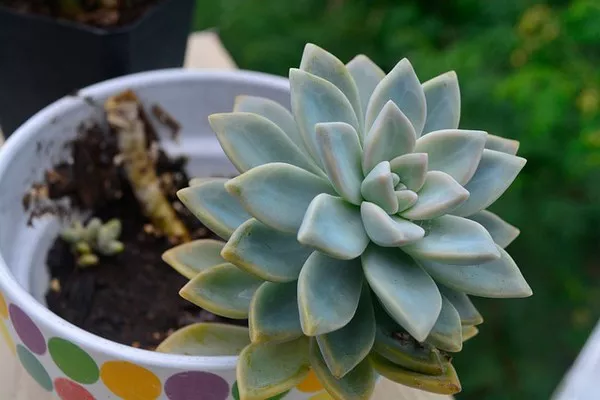Succulents, with their captivating beauty and resilience, have surged in popularity in recent years among both seasoned gardeners and novices alike. These plants, known for their ability to store water in their leaves, stems, or roots, come in a stunning array of shapes, sizes, and colors. From the iconic aloe vera to the charming echeverias, the world of succulents offers endless possibilities for botanical enthusiasts. In this comprehensive guide, we’ll delve into the fascinating world of succulents, exploring their diverse types, characteristics, and care requirements.
Understanding Succulents: An Overview
Succulents belong to various plant families, with the most prominent being the Crassulaceae, Agavaceae, and Cactaceae families. While cacti are a subset of succulents, not all succulents are cacti. Succulents have evolved to thrive in arid environments, where water is scarce and temperatures can be extreme. Their unique adaptations, such as thickened leaves or stems, enable them to store water efficiently, making them well-suited for dry climates and indoor cultivation.
Types of Succulents
The diversity of succulents is truly remarkable, encompassing a wide range of shapes, textures, and growth habits. Here are some of the most popular types of succulents, each with its own distinctive features:
1. Aloe Vera (Aloe barbadensis): Perhaps one of the most well-known succulents, aloe vera is prized for its medicinal properties and striking appearance. Its fleshy, spiky leaves contain a gel that is commonly used to soothe sunburns and skin irritations.
2. Echeveria: With their rosette-shaped foliage and vibrant hues ranging from pastel pinks to deep purples, echeverias are beloved for their ornamental value. These compact succulents are ideal for container gardens and rockeries.
3. Sedum: Sedums, also known as stonecrops, encompass a diverse group of succulents that vary in size and form. From creeping ground covers to upright perennials, sedums offer versatility in garden design and landscaping.
4. Haworthia: Characterized by their intricate rosettes of pointed leaves, haworthias add architectural interest to any succulent collection. These low-maintenance plants are well-suited for indoor cultivation and thrive in bright, indirect light.
5. Agave: Known for their dramatic, sword-like leaves and striking symmetry, agaves make a bold statement in any garden or landscape. These large succulents are often grown as focal points or architectural accents.
6. Crassula: Crassulas encompass a diverse genus of succulents that range from compact, ground-hugging species to tall, tree-like specimens. Their unique leaf shapes and growth habits make them popular choices for bonsai and container gardening.
7. Sempervivum: Commonly known as hens and chicks, sempervivums are hardy succulents that form tight clusters of rosettes. These cold-tolerant plants are ideal for alpine gardens and rockeries.
8. Kalanchoe: Kalanchoes are prized for their colorful, long-lasting blooms and attractive foliage. These succulents come in a variety of shapes and sizes, making them versatile additions to indoor and outdoor spaces.
9. Aeonium: Aeoniums are striking succulents characterized by their rosettes of fleshy leaves and branching growth habit. These architectural plants thrive in mild, coastal climates and can be grown outdoors or indoors with proper care.
10. Crassula ovata (Jade Plant): Renowned for its resilience and longevity, the jade plant is a classic choice for succulent enthusiasts. Its glossy, jade-green leaves and compact growth habit make it well-suited for bonsai and container gardening.
Caring for Succulents
While succulents are often lauded for their easy-care nature, proper cultivation and maintenance are essential for their health and longevity. Here are some tips for caring for succulents:
1. Light: Most succulents thrive in bright, indirect light. Place them near a sunny window or under grow lights to ensure adequate light exposure.
2. Watering: Succulents are drought-tolerant plants that prefer infrequent watering. Allow the soil to dry out completely between waterings, and avoid overwatering, which can lead to root rot.
3. Soil: Use a well-draining potting mix specifically formulated for succulents and cacti. Avoid heavy, moisture-retentive soils, as they can cause waterlogged conditions.
4. Temperature: Succulents prefer warm temperatures during the growing season but can tolerate cooler temperatures in winter. Protect them from frost and extreme heat to prevent damage.
5. Fertilization: Feed succulents sparingly with a balanced, water-soluble fertilizer diluted to half strength during the growing season. Avoid excessive fertilization, as it can cause salt buildup in the soil.
6. Propagation: Many succulents can be propagated easily from stem or leaf cuttings. Allow the cuttings to callus over before planting them in a well-draining potting mix to encourage root development.
7. Pests and Diseases: Monitor succulents regularly for signs of pests such as mealybugs, aphids, and scale insects. Treat infestations promptly with insecticidal soap or horticultural oil. Additionally, avoid overwatering, as it can predispose succulents to fungal diseases.
Conclusion
By understanding the diverse types of succulents and their unique care requirements, enthusiasts can create stunning displays both indoors and outdoors. Whether you’re drawn to the architectural elegance of agaves or the delicate beauty of echeverias, there’s a succulent to suit every taste and style. With proper care and attention, these captivating plants will thrive and bring joy for years to come.


